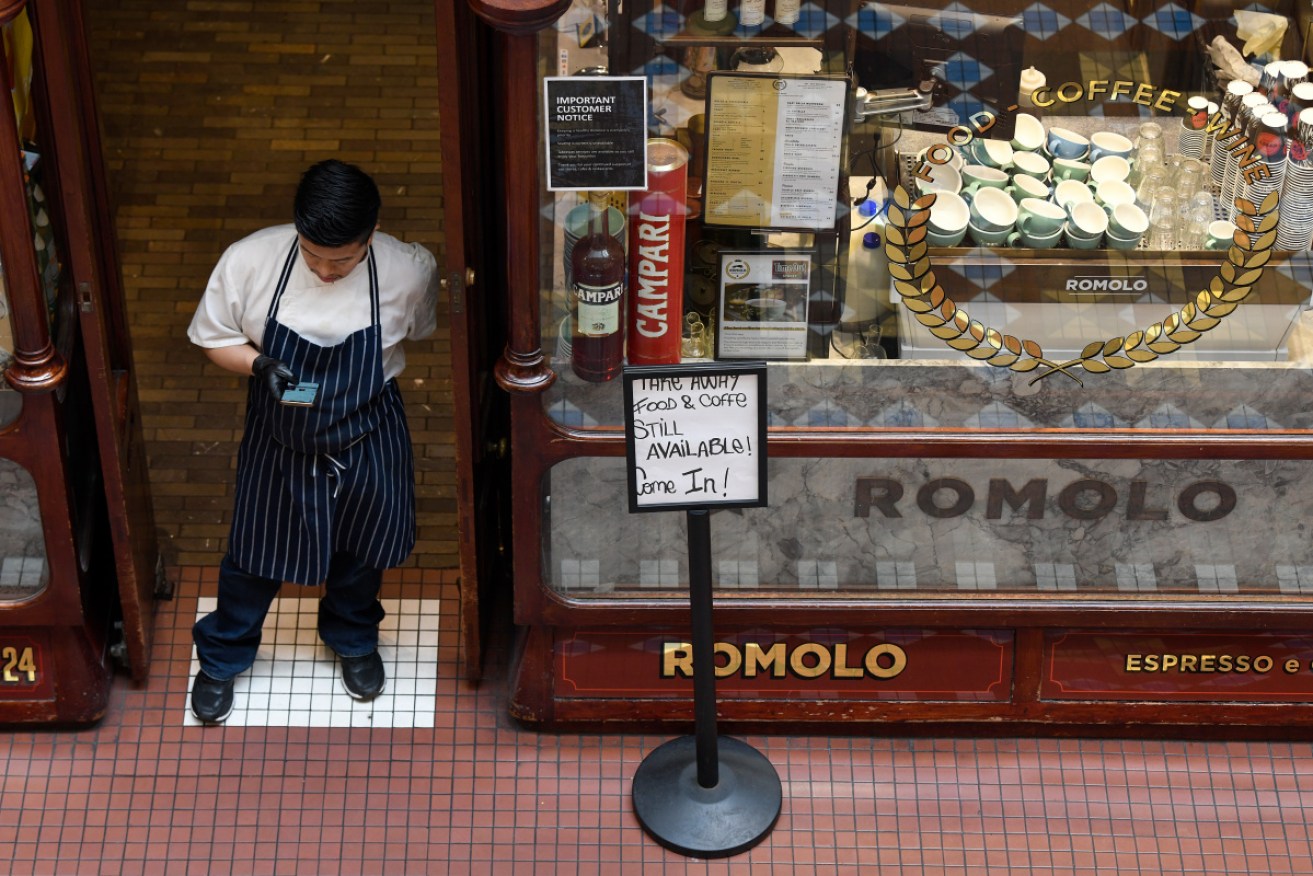‘A big hole’: The missing jigsaw piece driving our labour shortages


Hospitality businesses in Australia have been hit particularly hard by labour shortages fuelled by closed borders. Photo: AAP
Melbourne restaurant owner Mark Normoyle probably couldn’t service a full house right now even if the Victorian state government would let him.
His business, Luna Food and Wine Bar, can’t find enough staff to wait all of its tables.
“The labour shortage is pretty well everywhere: Baristas, waiters, chefs of all levels,” Mr Normoyle told TND.
“We’ve been forced to take on people with little to no practical experience in the kitchen … it’s been very difficult.”
The jobs market has bounced back from the COVID crash, but even though the government says employment has recovered to pre-pandemic levels, many businesses still haven’t found enough staff.
At face value, it doesn’t make sense.
If employment is back to where it was, then why are some employers saying they have less staff than before the pandemic?
New research from Commonwealth Bank has offered some clues.
Has employment really recovered?
In a note published on Wednesday, CBA economist Gareth Aird interrogated the Morrison government’s claim that employment has rebounded to its pre-pandemic high.
He found that the monthly ABS jobs data used by the government has disguised a sharp fall in the number of overseas staff.
Mr Aird said because the data excluded overseas residents, it hadn’t “accurately captured the impact of the international border closure on the labour market”.
He found that employment for residents had rebounded to its pre-COVID high over the March quarter, but total employment including overseas workers, as identified by the ABS quarterly labour count, had fallen 2.1 per cent below pre-pandemic levels.
“The number of non-resident workers in Australia has fallen sharply over the past year despite the overall level of employment rising strongly since mid-2020,” Mr Aird explained.
“Many foreign workers have returned home, while foreign arrivals have dropped to zero.”
It’s something worth keeping in mind when the ABS releases its monthly labour force data on Thursday, because it shows that falls in the jobless rate are much easier to come by while Australia’s borders remain closed.
‘Big hole in our industry’
The shortage of international workers isn’t news to Mr Normoyle or many others in the hospitality industry who have been dealing with the largest fall in overseas workers Australia has faced in recent memory.
“I’ve been working in kitchens for over 30 years and in the last 10 years I would say about 60 per cent of my kitchen staff would have been international workers,” Mr Normoyle said.

Melbourne hospitality business owner Mark Normoyle.
“A lot of those people left during the pandemic.
“There’s a big hole in our industry.”
About 200,000 overseas workers left the country during the pandemic, according to estimates from the Restaurant and Catering Industry Association.
And hospitality is not the only industry that’s struggling with shortages.
Nick Bell, owner of digital businesses like Appscore and Removify, said he’s currently hiring for more than 100 roles but cannot find the staff.
“Access to talent is drying up and the border closures are hurting,” Mr Bell told The New Daily.
“We advertise on all jobs boards, engage multiple recruiters, offer up to $5000 referral fees, and post heavily on our social media and LinkedIn.”
The wages question
Mr Aird said that while fewer people have jobs, those that have them are making more money for their employers, with hours worked across the economy down 2.2 per cent on pre-COVID levels despite GDP rising 0.8 per cent.
He said that should put upward pressure on wages sooner rather than later.
“The labour market is tightening very quickly and a lift in wages growth is forthcoming as firms compete for labour,” Mr Aird said.
Although that would be welcome news for workers, who have not had a decent pay rise for nearly a decade, not everyone is convinced it will happen any time soon, including Mr Normoyle.
Mr Normoyle said many businesses in his industry aren’t in a position to offer higher rates of pay, particularly after lower-waged international staff became the competitive standard over the past decade and pushed down prices in the process.
“We can’t input [higher wage] costs on to the customer. We can’t sell a steak for $70, [because] people will not pay it,” he explained.
“At the end of the day, we can only charge what the market will pay. We work off very small margins as it is.”
Unfortunately for workers, the Reserve Bank board also expects no decent pay rises for the foreseeable future.
“Firms were also opting to ration output because of labour shortages, rather than pay higher wages to attract new workers,” the board said in its May board meeting minutes.
The RBA is not forecasting wages growth to hit 2.25 per cent until 2023 and the board says it has seen few positive signs on this front.
“Wages growth was low across a broad range of industries [in the March quarter],” the board said.
“While a faster pick-up in wages growth was possible, members continued to expect a gradual increase in the following few years as spare capacity in the labour market was steadily absorbed.”









